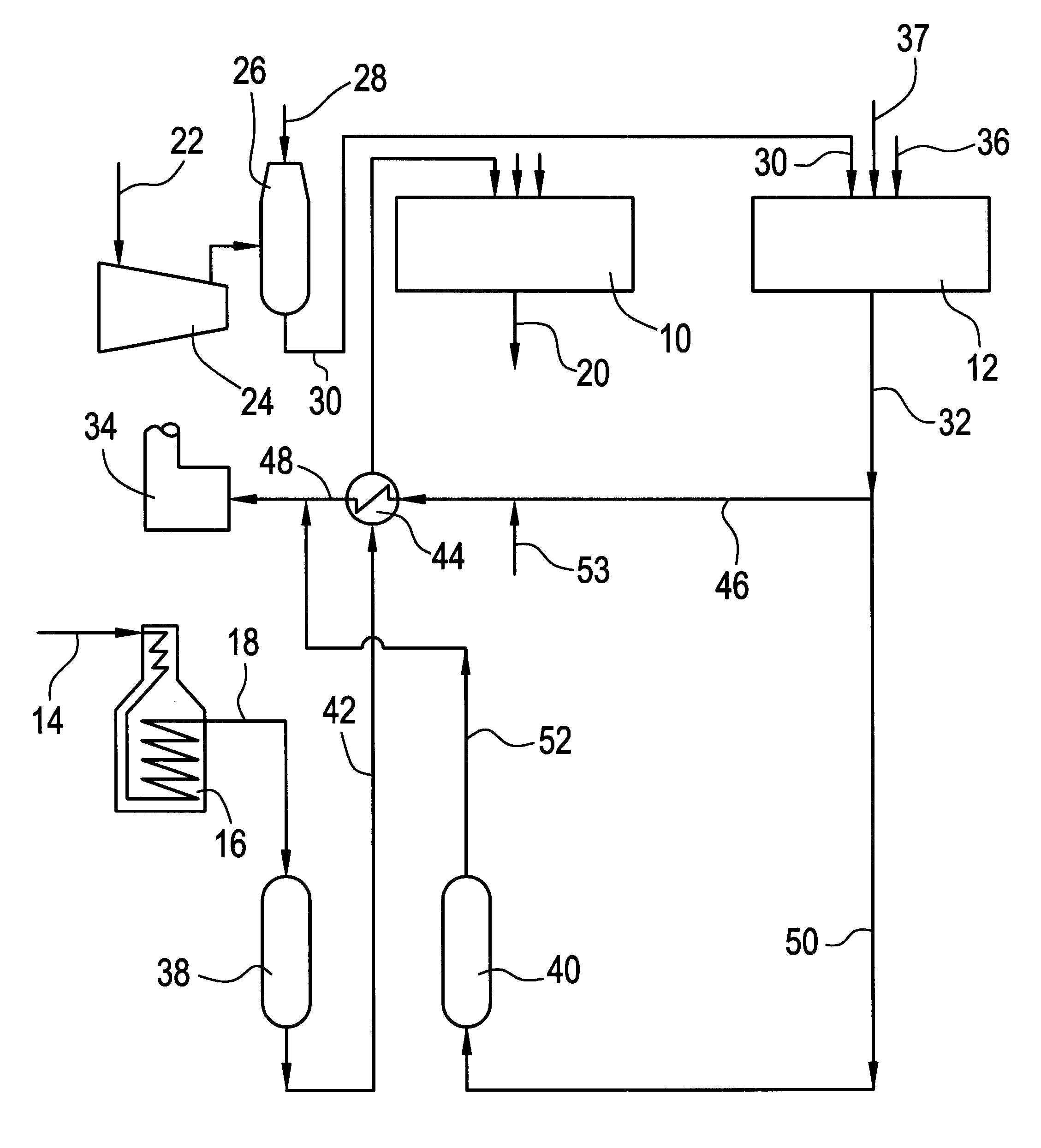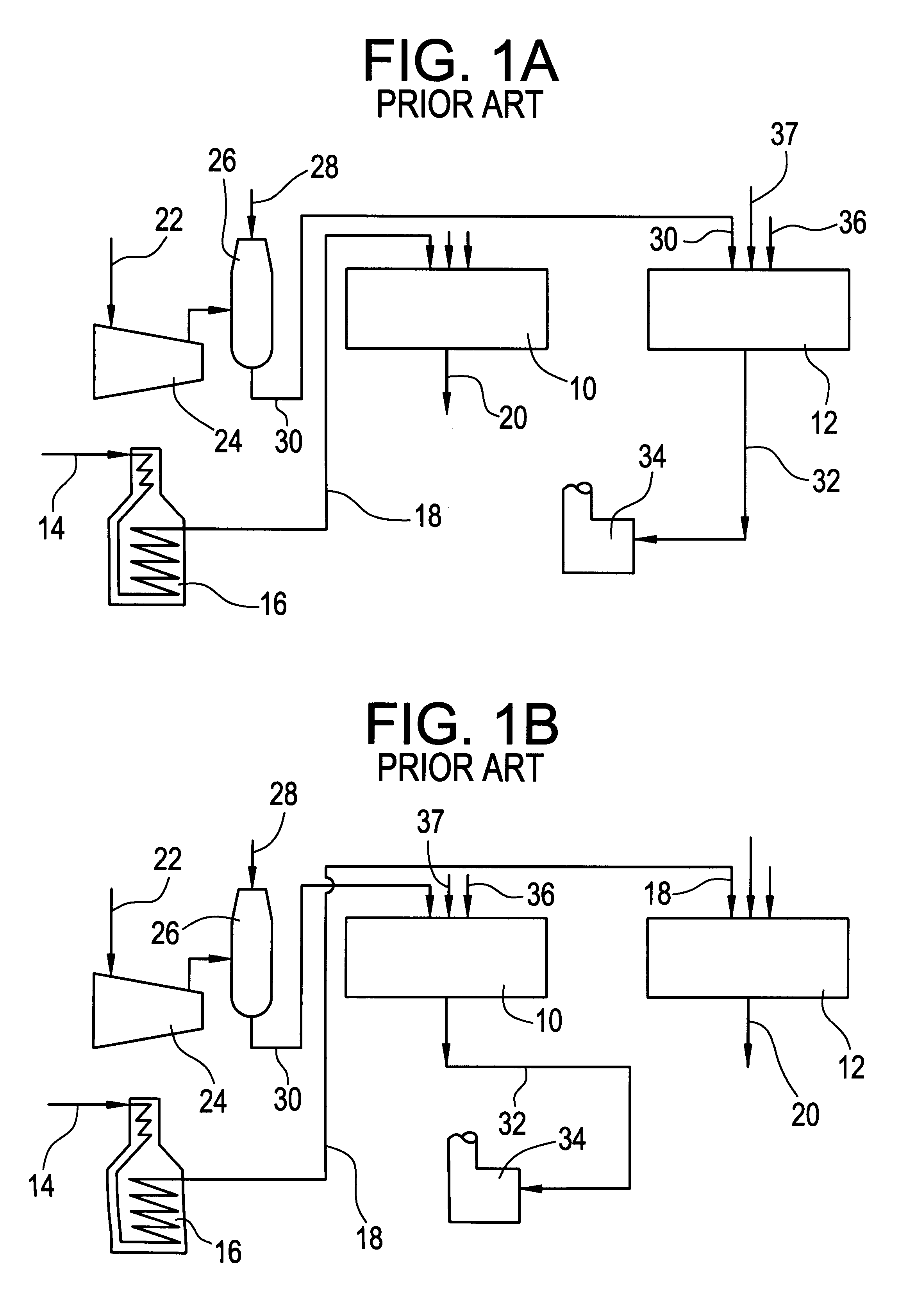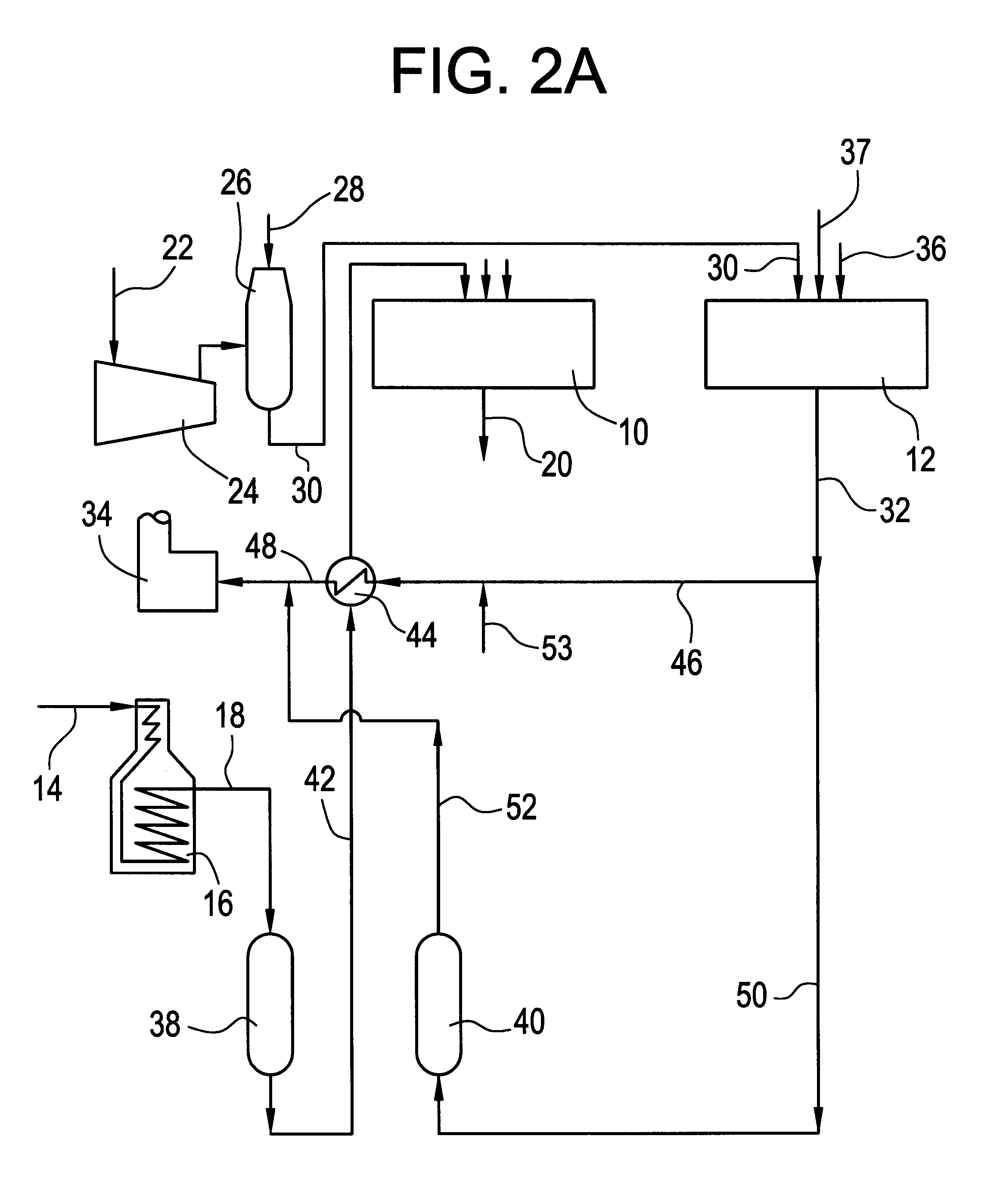Catalytic hydrocarbon dehydrogenation system with prereaction
a hydrocarbon dehydrogenation and catalytic technology, applied in the direction of hydrocarbon by hydrocarbon cracking, chemistry apparatus and processes, organic chemistry, etc., can solve the problems of catalyst becoming too cool to sustain the reaction, significant loss of process efficiency, and limited thermodynamic conversion, etc., to achieve the effect of increasing the performance of an endothermic catalytic dehydrogenation process
- Summary
- Abstract
- Description
- Claims
- Application Information
AI Technical Summary
Benefits of technology
Problems solved by technology
Method used
Image
Examples
Embodiment Construction
In order to understand the nature of the present invention, the prior art process for the endothermic catalytic dehydrogenation of paraffinic hydrocarbons will be described with reference to FIGS. 1A and 1B. The system illustrated in these figures comprises two dehydrogenation reactors 10 and 12. These consist of relatively shallow catalyst beds located in long horizontal vessels. This reactor shape minimizes pressure drop by providing a large cross-sectional flow area. One of the two reactors is placed on-stream for dehydrogenation while the other reactor is off-stream for catalyst regeneration, catalyst reduction and reheating as will be explained. In FIG. 1A, the reactor is on-stream and the reactor 12 is off-stream while the reverse arrangement is shown in FIG. 1B.
The cycle begins with the preheating of the hydrocarbon feed 14 in the heater 16 and the introduction of the preheated feed 18 into the reactor 10. Typically the hydrocarbon feed is preheated to about 590.degree. C. bu...
PUM
| Property | Measurement | Unit |
|---|---|---|
| Fraction | aaaaa | aaaaa |
| Fraction | aaaaa | aaaaa |
| Fraction | aaaaa | aaaaa |
Abstract
Description
Claims
Application Information
 Login to View More
Login to View More - R&D
- Intellectual Property
- Life Sciences
- Materials
- Tech Scout
- Unparalleled Data Quality
- Higher Quality Content
- 60% Fewer Hallucinations
Browse by: Latest US Patents, China's latest patents, Technical Efficacy Thesaurus, Application Domain, Technology Topic, Popular Technical Reports.
© 2025 PatSnap. All rights reserved.Legal|Privacy policy|Modern Slavery Act Transparency Statement|Sitemap|About US| Contact US: help@patsnap.com



